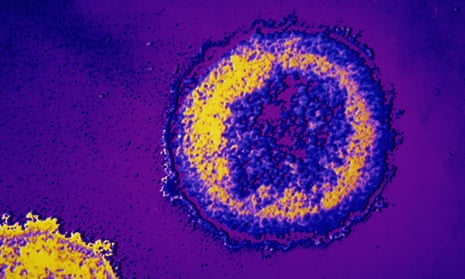HIV spreads throughout the body in a similar way to some computer worms, according to a new model, which also suggests that early treatment is key to finding a cure to the disease.
HIV specialists and network security experts at University College London (UCL) have found that HIV progresses both via the bloodstream and directly between cells – akin to computer worms spreading themselves through two routes to infect as many computers as possible.
Prof Benny Chain, from UCL’s infection and immunity division, the co-senior author of the research, said: “I was involved in a study looking in general at spreading of worms across the internet and then I realised the parallel. They have to consistently find another computer to infect outside. They can either look locally in their own networks, their own computers, or you could remotely transmit out a worm to every computer on the internet. HIV also uses two ways of spreading within the body.”
The model was inspired by similarities between HIV and computer worms such as the highly damaging “Conficker” worm, first detected in 2008, which has infected military and police networks across Europe and is still active today.
The researchers’ findings, published on Thursday, told them that just as computer worms spread most efficiently by a combination of two routes, so must HIV – enabling the researchers to create a model for this “hybrid spreading”, which accurately predicted patients’ progression from HIV to Aids.
Detailed sample data from 17 HIV patients from London were used to verify the model, suggesting that hybrid spreading provides the best explanation for HIV progression and highlighting the benefits of very prompt treatment.
Chain said the model provided strong evidence of cell-to-cell spread, which he said some HIV scientists remained sceptical about, as it is difficult to observe in human beingsbecause it occurs in tissue.
At present, the UK follows current World Health Organisation guidelines, which recommend only beginning treatment for HIV when the infected person falls ill, or when the number of cells that protect their immune system fall below a certain level, rather than as soon as someone tests positive. This approach reduces the amount of drugs taken over a patient’s lifetime, while lessening the risk of – and delaying – the development of resistance.
But Chain said that it followed from UCL’s model that early intervention was required to completely block cell-to-cell transfer as well as to prevent viral spread through the bloodstream.
He said: “Both of them [early and late intervention] work in terms of controlling the virus but there is a lot of interest now in trying new jabs which will not only control your disease but cure it completely. It’s obviously not good to be taking the drugs for the rest of your life.
“It’s much easier to eradicate the disease earlier than later. By the time it’s very well established there’s a lot more of it eating away, so the idea of eradicating it becomes extremely difficult.”
The lead author of the research, Changwang Zhang, said both HIV and the Conficker worm “use hybrid spreading mechanisms, persist for a very long time and are incredibly difficult to eradicate. Our model enables us to explain these important properties and to predict the infection process.”
